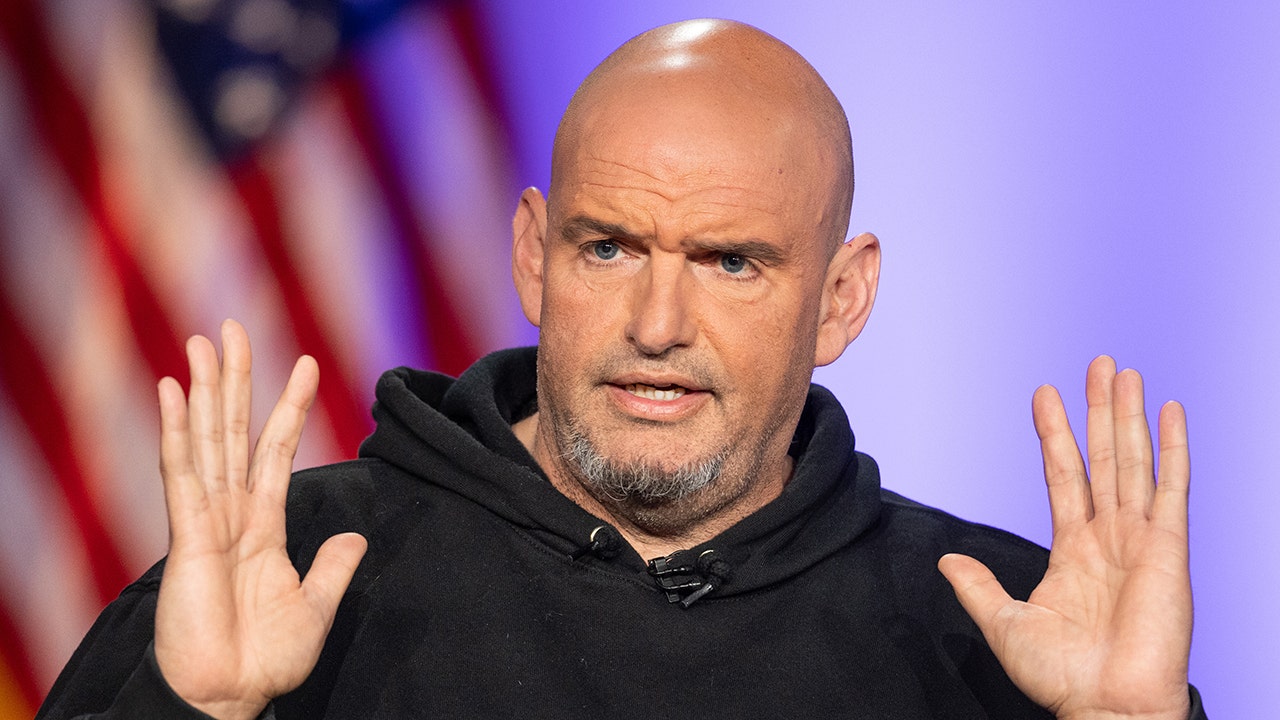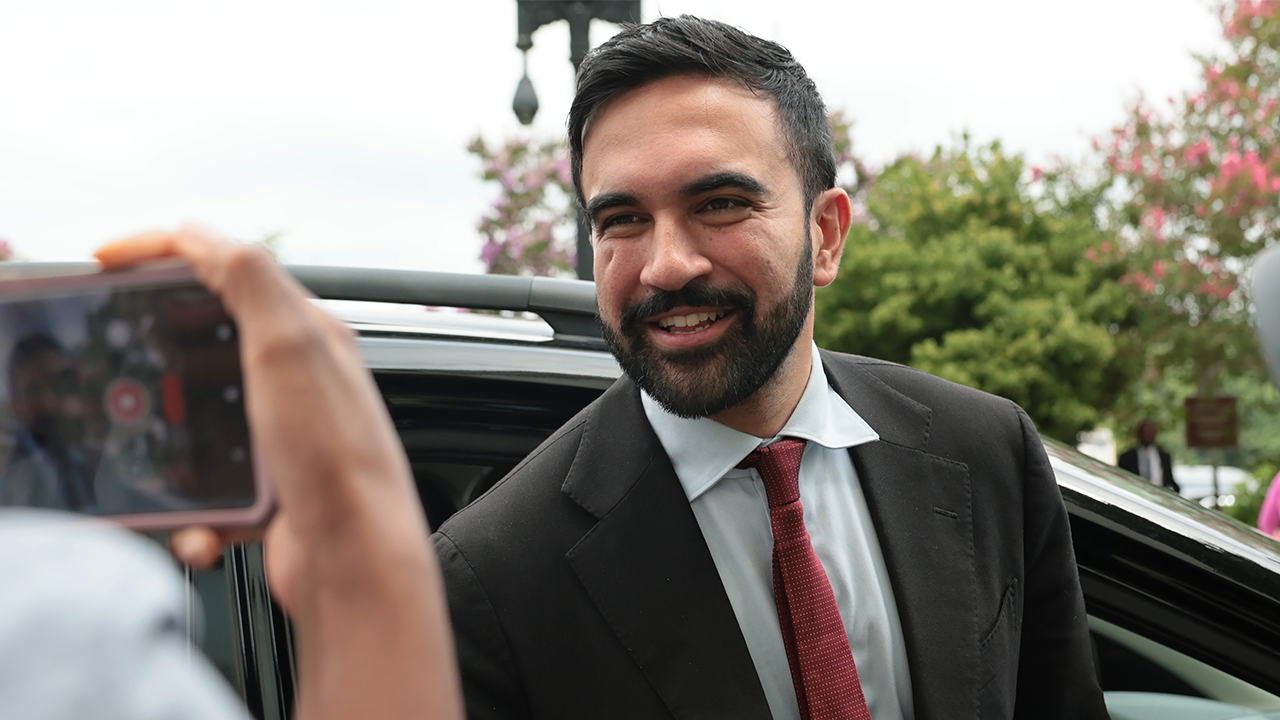Business
Cruise sidelines entire U.S. robotaxi fleet to focus on rebuilding ‘public trust’

In the wake of California withdrawing Cruise’s permit to operate self-driving cars in the state, the company announced that it’s suspending all U.S. robotaxi operations.
The move comes after the California Department of Motor Vehicles alleged that Cruise withheld from regulators video footage of a Cruise robotaxi dragging a person down a city street.
The future for the company is uncertain. Its parent company, General Motors, has lost $1.9 billion on Cruise so far this year, including a $732-million loss in the third quarter, according to its latest earnings report. Competitor Ford shut down its Argo robotaxi unit in 2022, concluding that the possibility of far-off profits weren’t worth the enormous cash drain.
The California DMV gave two reasons for suspending Cruise’s license this week: concerns about safety and claims that the company withheld from regulators video footage that showed a Cruise robotaxi drag an already injured woman 20 feet across street pavement before emergency workers could reach her.
“The most important thing for us right now is to take steps to rebuild public trust,” Cruise said in a statement online Thursday night. “Part of this involves taking a hard look inwards and at how we do work at Cruise.”
Cruise vehicles with humans behind the wheel will continue to operate. Until this week, the company had been operating driverless services in San Francisco, Phoenix, Miami, Houston and Austin, Texas.
Cruise needs to be “extra vigilant when it comes to risk, relentlessly focused on safety” as it rebuilds public trust, a spokeswoman told The Times.
The incident marks a dark chapter in the emerging history of the automated vehicle industry. Whether Cruise’s actions will harm the industry’s reputation, or only its own, remains to be seen.
Robotaxi companies claim that autonomous vehicles are already safer than cars driven by humans. Officials in San Francisco say they’re having trouble getting these companies to provide adequate data to prove that. But Cruise is dealing with more than safety in this case — it’s dealing with allegations that it misled regulators and the media in ways that might erode public trust.
On Oct. 2, a car with a human behind the wheel hit a woman who was crossing at the intersection of 5th and Market streets in San Francisco against a red light. The pedestrian slid over the hood and into the path of a Cruise robotaxi, with no human driver. She became pinned under the car, and was later taken to a hospital.
Cruise quickly called the crash tragic but said that the robotaxi stopped as it was supposed to and that a human driver couldn’t have reacted as quickly.
What Cruise did not say, and what the DMV revealed Tuesday, is that after sitting still for an unspecified period of time, the robotaxi began moving forward at about 7 mph, dragging the woman with it for 20 feet.
Cruise had shown a video of the incident to reporters but barred them from posting it publicly. (Because of that restriction, The Times turned down Cruise’s offer.) The video shown to reporters ended with the robotaxi sitting motionless, but did not include the vehicle dragging the woman.
The DMV said Cruise showed it the same abbreviated video, and only later did the agency see the full version. The two sides are fighting about that version of events. Cruise told reporters it showed the DMV the full video from the start.
In response to a request for comment, a spokesperson for the DMV said it stands by the facts outlined in the orders of suspension.
Cruise Chief Executive Kyle Vogt
(Kimberly White / Getty Images for TechCrunch)
Controversy has surrounded the company for months, after San Francisco’s fire chief lit into Cruise and another robotaxi company, Waymo, for interfering with firetrucks and emergency workers. Police said robotaxis were getting in their way too.
Dozens of such incidents have been reported, including robotaxis blocking an ambulance from exiting a firehouse, driving onto fire hoses and parking themselves there, bursting through police tape and getting tangled in downed utility wires. Cruise robotaxis sometimes gather together up to a dozen at a time to block pedestrians and other cars at busy intersections, a phenomenon whose cause remains a mystery, at least to the public.
Nonetheless, the California Public Utilities Commission, which regulates taxi fares, voted to allow a massive expansion of robotaxi service across San Francisco. Cruise Chief Executive Kyle Vogt soon started talking about big plans for explosive growth, including the introduction next year of a six-passenger pod-like vehicle with no steering wheel called the Origin. “The goal is to get to scale as quickly as we can in terms of the total number of AVs to make this business profitable and sustainable,” he said at the TechCrunch Disrupt conference in September.
Waymo, owned by Google parent Alphabet, is also planning to grow its fleets and move into new cities. It has already launched in Santa Monica and will soon expand to Los Angeles. Los Angeles officials are trying to get a close look at company plans, but are stymied by state law that gives cities little authority over robotaxi operations.
Other robotaxi companies are also gearing up to expand, including Zoox and Motional. Those companies are likely to draw more scrutiny in the wake of Cruise’s setback, said Bryant Walker Smith, an automated vehicle law expert at the University of South Carolina.
Alain Kornhauser, who heads the autonomous vehicle engineering program at Princeton, said the dragging incident is indeed tragic but it’s something that can be fixed. “The problem is, I don’t think anybody who’s writing code thought about a person being trapped under the car,” he said. “Now they can do something like mount a camera to make sure there’s no one under the car before it moves.”
People will be forgiving of odd robotaxi behavior if they trust the companies involved, he said. “But this covering-up business and not being forthright” does long-term damage to public acceptance, he said. “Didn’t we learn from Watergate that the coverup can be worse than the crime? They could be apologetic. They could say, ‘We’re not going to do that again.’”

Business
Uvalde school shooter was fueled by Instagram and 'Call of Duty,' L.A. lawsuit alleges

Tess Mata’s parents were once enthusiastic about social media. The 10-year-old from Uvalde, Texas, wanted to be TikTok famous. She used to dance, sing and imitate popular trends on her videos, with mom Veronica and dad Jerry keeping a watchful eye on her online habits.
But then Tess was gunned down at Robb Elementary School in 2022, one of 19 children and two teachers killed by a former student.
Since then, as details of the shooter’s personal life have become public, the Matas and a handful of other Uvalde families have come to believe that his exposure to gun content online and in video games led to the tragedy.
Jerry and Veronica Mata stand in front of the Spring Street Courthouse on July 17 in Los Angeles. After their daughter Tess was killed in the school shooting in Uvalde, Texas, the couple are suing Meta, Activision and Daniel Defense in an attempt to challenge social media and video game marketing that they say urged the shooter to commit violence.
(Juliana Yamada / Los Angeles Times)
They are now suing three companies they allege profited off the violent fantasies that led to their children’s deaths. The defendants include the maker of “Call of Duty,” a first-person military shooter game where they say 18-year-old Salvador Ramos encountered a virtual version of a Daniel Defense-branded AR-15 he used in the attack. They are also suing Meta, alleging Ramos encountered ads for the gun that promoted violence on Instagram.
The Matas and three other families from Uvalde will travel more than 1,200 miles this week to confront the companies in L.A. County Superior Court, where they have filed claims for negligence, aiding and abetting and wrongful death.
“They glorify these weapons. They made it enticing for young kids to want to purchase these guns, and kids that young are so receptive to these types of things,” Veronica Mata told The Times.
Activision, the Santa Monica-based video game developer, has filed for dismissal, arguing that the 1st Amendment protects “Call of Duty” as a work of art. Meta has also fought to have the case tossed, pointing to well-established case law that shields social media platforms from liability for third-party content posted by users and advertisers.
Whether the case proceeds could be decided at a hearing Friday in downtown L.A.

Jerry Mata holds dog tag necklaces of his daughter Tess, one of 19 students killed at Robb Elementary School in Uvalde, Texas, in 2022.
(Juliana Yamada / Los Angeles Times)
The families allege “Call of Duty,” one of the top-grossing video game franchises in the world, encouraged violence by catching Ramos in a repeated gameplay loop with real-world weapons. And they claim Instagram equipped him with the knowledge of how, when and where to buy the gun he used.
“To put a finer point on it: Defendants are chewing up alienated teenage boys and spitting out mass shooters,” the complaint claims, noting that the three most deadly K-12 school shootings in American history — Uvalde, Parkland and Sandy Hook — were all committed by young men who played “Call of Duty” and used an AR-15.
“Call of Duty is a simulation, not a game. It teaches players how to aim, reload, and fire accurately, while habituating the teenage nervous system to inflict repeated, graphic violence. And though the killing is virtual, the weapons are authentic,” the complaint alleges.
Ramos’ choice of the Daniel Defense AR-15 was intentional, the lawsuit said. The small weapons manufacturer has a market share of less than 1%, but a specific rail displayed on a popular “Call of Duty” gun made it easily identifiable to players online despite a lack of branding inside the game.
“It is the Defendants who gave Daniel Defense a direct line into children’s homes and heads, who wrote a playbook for how to peddle firearms while circumventing parents and the law, and who created a simulation with real-life weapons and applauded children for their proficiency at killing,” the complaint said.
Meta did not immediately respond to The Times’ request for comment, nor did Daniel Defense, another defendant in the lawsuit.

A photo of a weapon next to the truck that the Robb Elementary School shooter crashed before the shooting on May 24, 2022.
(Pete Luna / Uvlade Leader-News)
Courts have long rejected the idea that violent video games like “Call of Duty” are responsible for the actions of those who play them despite the moral panic surrounding the issue, and have also overturned efforts to restrict minors’ access to them.
Most modern “Call of Duty” games are rated for mature audiences over 17 by the Entertainment Software Ratings Board, but are available to minors through online marketplaces that don’t meaningfully verify someone’s age before purchase.
“Any adolescent that wants to download Call of Duty can do that,” Josh Koskoff, a lawyer for the Uvalde families, told The Times.
A 2011 Supreme Court case, Brown vs. Entertainment Merchants Assn., struck down a 2005 California law that banned the sale of violent video games to minors. There was “no tradition in this country of specially restricting children’s access to depictions of violence. … Grimm’s Fairy Tales, for example, are grim indeed,” the late Justice Antonin Scalia wrote in the 7-2 majority opinion.
Activision has long defended its games as protected artistic expression despite criticism of its extreme violence, which sometimes involves players killing other combatants — almost never allowing civilian casualties — in combat simulations, sometimes in public arenas like airports and urban sprawls.
“Call of Duty tells complex stories that explore the real-world combat scenarios that soldiers face in modern warfare. There can be no doubt Call of Duty is expressive and fully protected by the First Amendment,” the company said in a court filing.
The families still mourning their children say challenging the institutions that failed to protect them has been an ongoing fight. The new case is another chapter which feels like taking on giants, Veronica Mata said.

A woman walks near “Call of Duty” publicity on Dec. 7, 2022, in New York City.
(VIEW press / Corbis via Getty Images)
The city of Uvalde approved in May a $2-million settlement for a flawed police response to the shooting, and a Texas appeals court Wednesday ordered the release of documents from the school board and county about the shooting, local news reported.
“We can step forward, and we can make that change and make them understand that what they’ve done and what they continue to do is not benefiting them or anybody else,” Mata said.
Business
Commentary: She looked like a pro-worker Trump cabinet appointee. But now she's gutting the Labor Department

You may have detected a cautious note of relief among worker advocates when Donald Trump named Lori Chavez-DeRemer as his secretary of Labor.
During her sole term as a Republican member of Congress from Oregon (2023-25), Chavez-DeRemer was one of only three House Republicans to vote in favor of the so-called PRO Act, which would significantly strengthen collective bargaining rights. The measure passed the House in 2019 and 2021 but has been stifled ever since.
Her nomination and subsequent Senate confirmation elicited optimistic noises from the pro-union camp, as I reported in December.
This is an onslaught on people’s basic protections at work.
— Rebecca Reindel, AFL-CIO
“Her record suggests real support of workers & their right to unionize,” tweeted Randi Weingarten, president of the American Federation of Teachers, when Trump nominated Chavez-DeRemer in November.
AFL-CIO President Liz Shuler said she was “encouraged” by Chavez-DeRemer’s confirmation in March, “given her history of supporting the freedom of workers to organize, join unions and other fundamental values of the labor movement.”
The union leaders tempered their optimism with concerns about the anti-labor policies emanating from the Trump White House: Weingarten said she hoped the appointment signaled that “the Trump administration will actually respect collective bargaining and workers’ voices,” and Shuler said the AFL-CIO was “clear-eyed” that Chavez-DeRemer would be “joining an administration that’s been openly hostile to working people on many fronts in its first two months.”
Can you guess which way the ball has bounced?
On May 1, the Labor Department ordered its staff to cease enforcing a Biden administration rule that had raised the bar preventing businesses from designating their workers as independent contractors instead of employees, depriving those workers of the legal protections and wage and hour benefits typically due employees.
A few days later, Chavez-DeRemer submitted a proposed budget to Congress that would slash her agency’s discretionary funding by more than 35%, to $8.6 billion from $13.2 billion, and cut its workforce by nearly 4,000 full-time workers, a reduction of more than 26%. Among the services to be eliminated would be the Job Corps, which assists low-income youth to complete their high school education and provides job training and placement. (A federal judge in New York has blocked the suspension of Job Corps services and set a hearing for Monday.)
On July 1 came what could be the biggest blow. Chavez-DeRemer announced a plan to rescind 63 regulations that had been designed to help workers. With language that sounds cribbed from the MAGA playbook, she said her goal is to “eliminate unnecessary regulations that stifle growth and limit opportunity.”
She boasted of launching “aggressive deregulatory efforts in push to put the American worker first,” and added that “these historic actions will free Main Street, fuel economic growth and job creation, and give American workers the flexibility they need to build a better future.”
I’ve asked the Labor Department to provide specific rationales for the deregulatory actions but haven’t received a reply.
The effects, however, are clear. “Two-thirds of these have to do with worker health and safety protections,” says Rebecca Reindel of the AFL-CIO. “They’re being proposed to be either eliminated or severely weakened.”
Chavez-DeRemer’s actions as Labor secretary resemble less the image she fostered as a member of Congress than the policymaking of Trump’s first term. Then, as I wrote at the time, the Department of Labor was “a black hole for worker rights.” His second Labor secretary, Eugene Scalia (son of the late Supreme Court Justice Antonin Scalia), had made his name professionally as a corporate lawyer fighting pro-worker government initiatives.
The standards on the chopping block include those issued by the Occupational Safety and Health Administration, a unit of the Labor Department, that were developed after years of effort. OSHA standards, Reindel told me, take an average of seven years — and as long as 20 years — to draft. “This is an onslaught on people’s basic protections at work.”
One category of threatened regulations applies to standards for respirators and filters to screen out workplace pollutants including asbestos, arsenic and lead. The department proposes to eliminate requirements that workers exposed to occupational pollutants be medically evaluated to ensure that their respirators fit properly and don’t cause health problems on their own.
The agency, asserting that such rules are “unnecessarily prescriptive,” proposes to give employers “greater flexibility in the respirators they select for exposed workers.” Removing some of these regulations, Reindel says, “basically would allow employers to make the determination if a respirator is needed for specific chemicals. They’d give employers more flexibility at the expense of workers’ health.”
One of the more potentially far-reaching proposals would narrow the application of OSHA’s “general duty clause,” which requires employers to maintain safe workplaces even when no specific OSHA regulation applies. In the most notable case, OSHA cited the clause in fining SeaWorld of Florida $12,000 in connection with the 2010 killing of trainer Dawn Brancheau by an orca during a performance. SeaWorld sued to overturn the penalty but lost in a 2-1 decision by the federal appeals court in Washington, D.C.
The three-judge panel found that even though the dangers of cavorting with wild animals for a public show were understood, SeaWorld should have done more to protect its human performers. (Who represented SeaWorld in that case? Eugene Scalia.)
The department is proposing to exempt from the rule “professional, athletic, or entertainment occupations” that are intrinsically dangerous. In justifying its proposal, the department cites a dissenting opinion in the appellate case by then-Appeals Judge Brett Kavanaugh, who is now on the Supreme Court.
In his dissent, Kavanaugh maintained that the agency exceeded its Congressional mandate: “The bureaucracy at the U.S. Department of Labor has not traditionally been thought of as the proper body to decide whether to ban fighting in hockey, to prohibit the punt return in football, to regulate the distance between the mound and home plate in baseball, to separate the lions from the tamers at the circus, or the like,” he wrote. The Department of Labor now maintains that Kavanaugh’s analysis, even though it was a minority finding, was right.
More than 115,000 athletes, actors and other entertainers could be affected by the change, the agency acknowledges.
The department also proposes to rescind a 2024 regulation that guaranteed the right of migrant agricultural workers to host union organizers in company-owned housing.
The Biden administration asserted that the regulation was needed to “protect workers’ fundamental rights of association” and observed that the isolation of workers in company-furnished quarters and their “unique vulnerabilities renders them particularly at risk of … workplace abuses, labor exploitation, and trafficking.”
The department, however, cites several court rulings in red states that have held that the regulation was “an infringement on the property rights of employers.” Indeed, that was the reasoning of the Supreme Court in overturning a California law providing for similar access on farm property in 2021.
“The access regulation grants labor organizations a right to invade the growers’ property,” wrote Chief Justice John Roberts for a 6-3 majority, with the court’s three liberal justices dissenting. “It therefore constitutes a per se physical taking” without compensation.
Worker advocates fear that the July 1 announcement is a precursor of more rollbacks to come. “I think the announcement is just the beginning of their deregulation effort,” says Margaret Poydock, a senior policy analyst at the labor-affiliated Economic Policy Institute. “These 63 rules they referenced were just two days’ worth of posting.”
One rulemaking effort that worker advocates are watching closely involves heat-related injuries. A proposed rule was posted in August and is still under consideration, with bipartisan support; public hearings on the rule were completed earlier this month, and final action is expected by the end of September. The Trump administration hasn’t taken any steps to quash it, thus far. But it has been fiercely opposed by business interests.
The U.S. Chamber of Commerce, for instance, submitted a 20-page comment arguing that the proposal “would result in OSHA micromanaging workplaces, imposing unreasonable burdens, and creating confusion as to what employers would be required to do.”
The proposal, which would apply to almost all employers, would be triggered whenever employees were exposed to a heat index — a measure taking into account heat and humidity — of 80 degrees or higher for more than 15 minutes in an hour-long period.
In those conditions, employers would be required to supply cool drinking water, break areas with cooling and paid rest breaks, among other measures. A heat index of 90 degrees would require mandatory rest breaks of 15 minutes every two hours and other heightened measures.
In the absence of a specific federal heat regulation, workplaces are subject to the general duty clause. But that’s inadequate, worker advocates say. “The general duty clause is reactive — it addresses what happens once a worker is already exposed,” Poydock told me. “It does not prevent workers from becoming sick from heat or having heat stroke or dying from heat.”
The Chamber’s objection is that the current proposal is a “one-size-fits-all approach” that fails to account for regional conditions.
“Businesses operating in consistently high-heat regions, such as Arizona, Florida, and Texas, where these temperatures are the norm,” would be disproportionately affected. “People in hotter climates tend to be more acclimatized to heat, including working in temperatures above 80° F, and thus have a lower risk of heat injury or illness.”
The labor leaders who once saw a glimmer of light in Chavez-DeRemer’s appointment have seen their hopes dashed. Until recently, one might have said that the jury was out on whether she would be a good Labor secretary or another MAGA cabinet member. Now, sadly, the jury’s verdict is in.
Business
Should You Get a Heat Pump? Take Our 2-Question Quiz.

Heat pumps are the future of home heating. They’re essentially two-way air-conditioners that use electricity to heat in the winter — as well as cool in the summer — and are typically far more efficient than other systems. They reduce household greenhouse gas emissions significantly.
They may also save you money on your monthly bills if you own a home. Answer just two questions below and we’ll give you a rough estimate:
What do you heat with currently?
Where do you live?
Answer the two questions and we’ll see how much you can save. Or, keep reading.
Don’t know what a heat pump is? You may already have seen one. It looks a lot like a typical air-conditioner, with a big box that sits just outside a house; inside, you might see small boxes mounted to the wall, or a single large indoor unit, out of sight, connected to vents.
In winter, heat pumps transfer heat from outside to inside. (Even in very cold temperatures, it’s still possible to extract heat from the air outside.) In summer, they do the opposite.
Because of how efficiently they do this, heat pumps are a critical piece of the green energy transition: One estimate suggests putting a heat pump in every home could reduce U.S. emissions by 5 to 9 percent.
They’re expensive to install but often qualify for subsidies. And they can save some homeowners hundreds or thousands of dollars each year by lowering their utility bills, for both heating and cooling.
But that’s not yet true for everyone, everywhere.
Share of households that would…
These numbers, and the information in the quiz above, come from a New York Times analysis that combines data on fuel and electricity costs around the country with estimates of how much energy it takes to heat many different kinds of houses, from research done by the National Renewable Energy Laboratory.
More than 80 percent of U.S. households would probably see their bills go down if they installed a heat pump.
But the rest would probably end up with higher bills — mostly people who use natural gas right now, given its low cost.
Nearly all households heating with propane, fuel oil or older electric forms of heating would save money by switching to a heat pump, but only about two-thirds of those currently on natural gas would.
How you currently heat is one major factor in your potential savings; the others are where you live and how the cost of electricity compares with other fuels in your area.
For households that currently heat with expensive fuels like propane and fuel oil, a heat pump is almost always a good bet. This is why Maine, which relies on fuel oil, has become a big adopter.
And a heat pump is significantly more efficient than electric furnaces or baseboards. The savings are biggest in the parts of the country that stay colder, longer. But there’s money to be saved in the South, too, in both the mild winters and the hot summers: South Carolina and Florida have some of the current highest rates of heat pump usage.
For households that currently heat with less expensive natural gas, however, the financial picture is much more mixed. Whether you save — or lose — depends heavily on your geography. And the savings are often smaller.
In the South, electricity is relatively cheap, and temperatures are mild. That makes switching from natural gas to a heat pump an easier sell. Modern heat pumps work in very cold temperatures, but they operate at their highest efficiency during mild weather.
In colder parts of the country, heat pumps are somewhat less efficient. They also give you central cooling, which can raise prices in the summer if you relied on fans before.
But the biggest problem in the North isn’t the weather — it’s the difference between the cost of electricity and the cost of gas.
On average, a heat pump is three to four times as efficient as a natural gas furnace. That means if electricity is only twice as expensive as natural gas for the same amount of energy, a heat pump is a good deal — as is the case in Georgia. But when electricity is five times as expensive as gas, as in Michigan, it’s a much harder sell.
Ratio of electricity to natural gas cost, for the same amount of energy
These are just averages, and other factors will influence your actual financial picture. For one, prices for both electricity and gas vary a lot within states. Rates in some places can also change depending on the time of day or the season, and some utilities offer lower rates specifically for heat pump customers. We also can’t know exactly how prices will rise or fall next year — we can only make guesses based on previous years’ costs.
Your choice should also take into account how well insulated your house is; whether you have solar panels; the efficiency level of the heat pump you’re considering; and whether you keep your boiler or furnace as a backup in colder temperatures, known as a “dual fuel” setup. Many households even in colder parts of the country, with high electricity costs, could still see savings from a heat pump. These are all things our calculations can’t help you with. The only way to be certain is to ask a contractor. (Ideally more than one.)
How long you’re going to stay in your house is important too: Heat pumps have high upfront costs, sometimes twice as much as that of a new gas furnace. Many states and utilities offer rebates to help: Massachusetts homeowners can get $10,000. (Republicans in Congress ended a federal tax credit that gave $2,000 or more toward a heat pump installation, though heat pumps installed this year still qualify.)
And if you already have central air for cooling, a heat pump is more likely to make financial sense. Installing one may be more expensive than replacing your furnace — or your central air-conditioning — but it can be cheaper than replacing both.
Despite their price tags, heat pumps have outsold furnaces for three years running, according to data from the Air-Conditioning, Heating, and Refrigeration Institute.
Heating units sold in the U.S.
Meanwhile, summers are getting hotter. If you don’t have central air yet, you might want it at some point.
And if you’re thinking about climate change in addition to your finances, switching to a heat pump will cut most houses’ carbon emissions significantly.
Median household emissions reduction from installing a heat pump
In some very cold places, the emission reductions are huge: The median house in Minnesota could emit around five fewer tons of carbon each year by switching to a high-efficiency heat pump, according to modeled data from the National Renewable Energy Laboratory. That’s a greater reduction than if you went car-free for a year (if you drive a gas car). And it’s around one-third of the average U.S. resident’s greenhouse gas emissions in a year.
Paradoxically, some of the places where a heat pump could slash emissions the most — including parts of the Northeast and Midwest — are the places where it could be a financial detriment right now. Still, for some, paying a little extra to reduce their carbon footprint might be worth it.
About the data
Cost calculations use a 2024 dataset from ResStock, a model of the U.S. housing stock by the National Renewable Energy Laboratory (NREL). ResStock contains estimates of the amount of energy it would take to heat and cool houses with an original heating source and with a heat pump. Houses that currently have a heat pump were excluded.
The dataset includes homes that did not have central cooling before the heat pump, which raises costs after the transition. It also relies on weather data collected from 1991 to 2005.
For electricity and natural gas prices, the Upshot used 2023 state-level sales, revenue and customer data from the Energy Information Administration (EIA) and prior NREL research to calculate the cost per unit of energy. For propane and heating oil, the Upshot used EIA data from 2023 on state-by-state prices, or a national average if data was missing.
The Upshot assigned a basic Energy Star heat pump (SEER2 15.2, HSPF2 7.8) to houses in warmer climates and a higher-efficiency cold climate heat pump (SEER2 19, HSP2 9.8) to colder areas. Both have supplemental electric heating.
For county-level results, the Upshot used county-only data when there were at least 50 houses using that fuel in that county, and state-level medians when there were fewer.
-

 News1 week ago
News1 week agoVideo: Clashes After Immigration Raid at California Cannabis Farm
-

 News1 week ago
News1 week agoTrump heads to Texas as recovery efforts from deadly flood continue
-

 World1 week ago
World1 week agoNew amnesty law for human rights abuses in Peru prompts fury, action
-

 Movie Reviews1 week ago
Movie Reviews1 week agoMaalik Movie Review – Gulte
-
Movie Reviews1 week ago
‘Doora Theera Yaana’ movie review: Mansore’s mature take on relationships is filled with relatable moments
-

 Politics1 week ago
Politics1 week agoDemocrat John Fetterman declares support for ICE, condemning any calls for abolition as 'outrageous'
-

 Technology1 week ago
Technology1 week agoIt’s the final day of Prime Day 2025, and the deals are still live
-

 Technology1 week ago
Technology1 week agoHere are 58 Prime Day deals you can still nab for $50 or less















